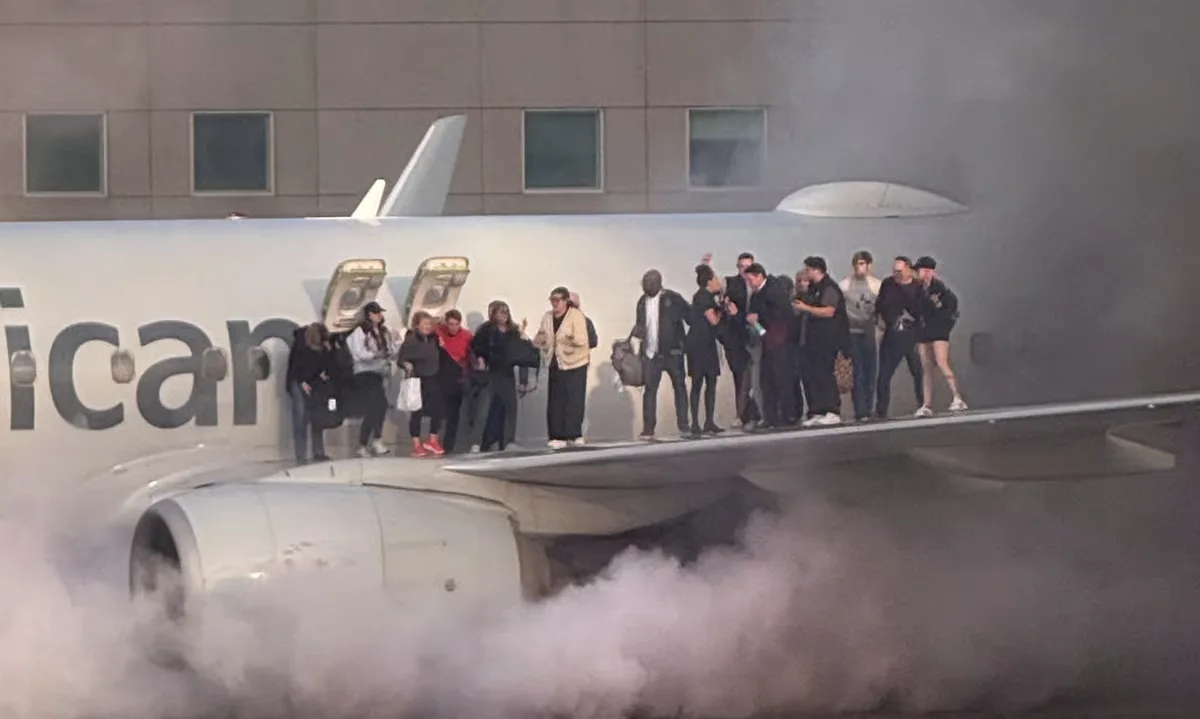Denver Plane Fire Traced to Engine Assembly Mistakes Says NTSB in Early Report
Loose Engine Parts and Leaking Fuel Led to Scary Moments for Passengers on Flight to Dallas
An emergency landing in Denver earlier this year involving an American Airlines flight has now been linked to serious maintenance issues, according to a preliminary investigation. A recent report revealed that the March incident, which saw flames erupt from one of the engines, was caused by improperly installed parts that allowed fuel to leak during taxiing.
The dramatic scene unfolded at Denver International Airport when a flight en route to Dallas-Fort Worth International Airport was forced to divert after pilots noticed a problem with one of the engines.
What Investigators Discovered
According to investigators, video footage from airport surveillance captured a trail of leaking fluid from the aircraft as it made its way along the runway. Upon further inspection, officials found that certain engine components were not only loose but also incorrectly installed. One critical fitting allowed fuel to escape, leading to the fire that erupted shortly after landing.
The findings strongly suggest human error in aircraft maintenance. While the final report is still pending, the initial results point toward maintenance oversight as the primary cause of the incident.
“The signs clearly indicate a maintenance issue,” explained a former transportation safety official. “Now the focus shifts to identifying where exactly the error occurred so that similar incidents can be prevented in the future.”
Cabin Chaos and a Swift Response
Passengers on board described terrifying moments when flames became visible under the wing. According to eyewitness accounts, panic spread quickly through the cabin. “Everyone was screaming, ‘There’s a fire!’” said one passenger. “We were already at the gate, and I was shouting, ‘Open the doors!’”
In the moments that followed, a flight attendant attempted to alert the pilots through the intercom but reportedly received no response. Another crew member rushed to the cockpit and knocked on the door to inform the pilots about the fire outside and smoke inside the cabin.
Though the fire was extinguished by ground crews in under a minute, the escape process was not without complications. Some passengers climbed out onto the wing, while a slide malfunction prevented the use of the cabin doors for evacuation.
“The fact that the emergency slide jammed is a serious concern,” said one aviation safety analyst. “Investigators will be looking into whether this was a manufacturing issue or another maintenance oversight.”
Injuries and Immediate Aftermath
Twelve passengers sustained minor injuries and were transported to a local hospital for further evaluation. The aircraft, which had taken off earlier from Colorado Springs, was carrying 172 people at the time of the incident.
In a follow-up statement, the airline reaffirmed its commitment to passenger safety and confirmed its full cooperation with the ongoing federal investigation.
A String of Aviation Incidents in 2025
The Denver fire joins a troubling list of aviation-related events that have occurred this year. In January, a midair collision involving a Blackhawk helicopter and a regional jet near Reagan National Airport claimed the lives of all 67 people on board. That flight had departed from Wichita, Kansas.
In another incident in February, a Delta regional jet crash-landed in Toronto and flipped on the runway, injuring 21 people. Fortunately, all 80 passengers and crew survived.
And in April, a plane carrying members of Congress was clipped by another aircraft while sitting on the tarmac at Reagan National Airport. No one was hurt, but the close call drew attention to air traffic safety.
Meanwhile, the Philadelphia Air Traffic Control Center has experienced several system outages since April, sparking further concern. These technical disruptions have affected flight operations at major hubs, including Newark Airport.
In response, government officials have announced plans to overhaul key elements of the aviation infrastructure to prevent future failures and improve nationwide flight safety.
Air Travel Still Statistically Safe
Despite recent high-profile incidents, air travel remains one of the safest forms of transportation. Current data shows that only 0.02% of domestic flights in 2024 were involved in any kind of accident.
While each event understandably generates public concern, safety analysts emphasize that aviation authorities respond with rigorous investigations and policy updates designed to ensure such events become increasingly rare.
The American Airlines fire in Denver highlights how critical proper maintenance is to flight safety. As investigators dig deeper into the root cause, the airline industry once again finds itself under scrutiny. However, with swift emergency response, thorough inspections, and renewed efforts in safety protocol enforcement, air travelers can continue to feel confident in the systems designed to protect them.
As for passengers on that March flight, the frightening experience has become a powerful reminder of how quickly things can change in the sky—and why every bolt and fitting matters.
